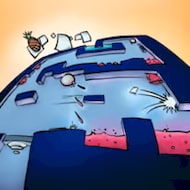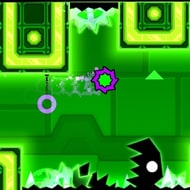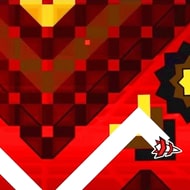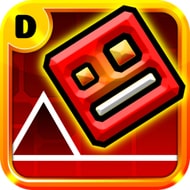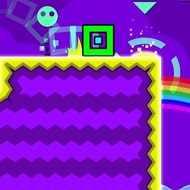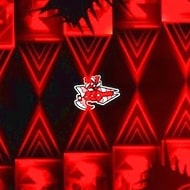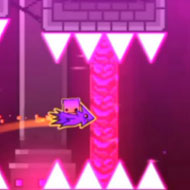
Geometry Dash Razorleaf
Geometry Dash Razorleaf offers a level built around sharp transitions, split-second timing, and shifting visual effects. The game sets itself apart with its layered paths, visual deception, and razor-thin survival margins.
Leaf Blades and Movement Tricks
Geometry Dash Razorleaf incorporates moving blade traps that rotate or sweep across the screen, forcing players to plan each move. The level layout includes deceptive dead ends and fake routes that lead to instant failure. One mistake can send you back to the start.
- Sweeping Blades: These cycle with the beat and slice across entire sections.
- Dual Path Options: Only one is safe, the other is a misdirection.
- Rotating Platforms: Sections that spin and launch the cube at varying speeds.
Visual Obstruction as a Mechanic
In Razorleaf, visual noise is used strategically. Bright flashes and changing hues obscure certain hazards, making them harder to anticipate. The game uses environmental distractions to heighten the challenge of already tight jump sequences.
- Blade Flash Traps: Traps are hidden until the last second, revealed by sudden light changes.
- Camouflaged Hazards: Spikes match the background and appear invisible at speed.
- Timing Blur Zones: The screen pulses to the music, blurring when jumping is most critical.
Winning Tips for Razorleaf
Geometry Dash Razorleaf rewards focus over speed. Despite its fast pace, rushing leads to predictable failures. Surviving this level takes patience, familiarity with false paths, and good reaction timing.
- Memorize Patterns: Some sections cycle consistently—learn them early.
- Control Jump Height: Precision over power makes it easier to land safely.
- Practice Flicker Sections: These are where most players fail—repetition helps improve response time.
Geometry Dash Razorleaf is designed to deceive and challenge. The game builds tension through misleading visuals, forcing players to adapt to both physical obstacles and perceptual tricks to reach the end.



